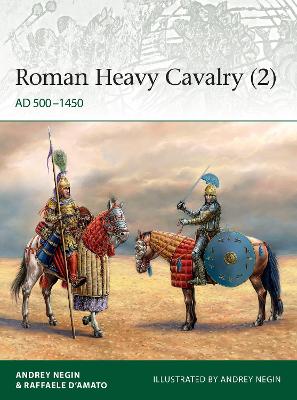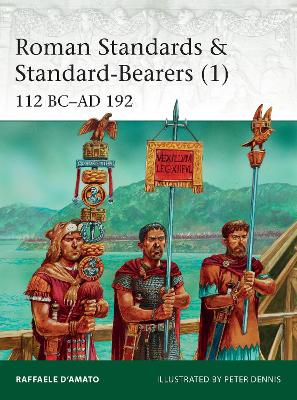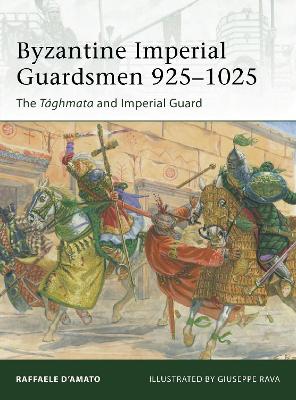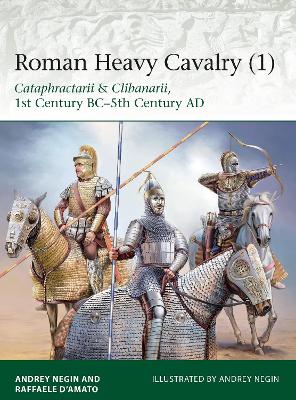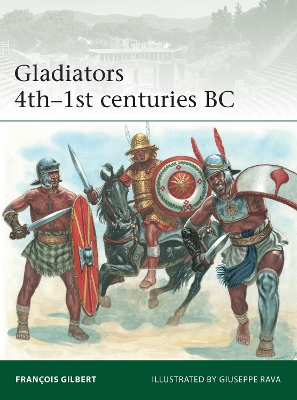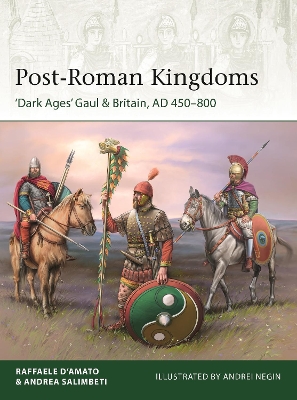Elite
2 primary works • 9 total works
Book 201
The Carthaginians 6th-2nd Century BC
by Andrea Salimbeti and Raffaele D'Amato
Book 204
Sea Peoples of the Bronze Age Mediterranean C.1400 BC-1000 BC
by Raffaele D'Amato
Roman Heavy Cavalry (2)
by Dr Andrey Evgenevich Negin and Raffaele D'Amato
Accounts from Muslim chroniclers show that the ironclad cataphract on his armoured horse was an awe- inspiring enemy: '...they advanced against you, iron -covered - one would have said that they advanced on horses which seemed to have no legs'. This new study, replete with stunning full-colour illustrations of the various units, offers an engaging insight into the fearsome heavy cavalry units that battled against the enemies of Rome's Eastern Empire.
Standard-bearers wore special armour, with the heads and pelts of animals such as bears, wolves, or even lions draped over their helmets and shoulders. The standards themselves varied greatly, from the legion's Eagle and imperial portrait image to various cohort signa, flags (vexilla) and even dragon 'windsocks' (dracones) copied from barbarian enemies and allies.
This first volume of a two-part series by Roman army expert, Rafaele D'Amato uses detailed colour plates and the latest research to examine these vital cogs in the Roman army machine that drove its soldiers to conquer the known world.
Roman Heavy Cavalry (1)
by Raffaele D'Amato and Dr Andrey Evgenevich Negin
Displaying these impressive and imposing cavalry units using vivid specially commissioned artwork, this first book in a two part series on Roman Heavy Cavalry examines their use over the Imperial period up to the fall of Western Empire in the 5th century A.D.
Armies of Julius Caesar 58-44 BC
by Raffaele D'Amato and Francois Gilbert
Originating in funeral rites during the Punic Wars of the 3rd century BC, the Roman gladiator games have come to symbolize the spectacle and savagery of Republican and Imperial Rome. Increasingly elaborate rules and rituals governed the conduct of gladiator combat, with an array of specially armed and armoured gladiator types pitted against one another, either singly or in groups. While many gladiators met a grisly end, some survived to achieve celebrity and make huge fortunes.
Despite the wealth of literary and archaeological evidence, many misconceptions about the gladiators and their violent world remain. Featuring photographs and drawings of key items of visual evidence and drawing upon the author's wealth of experience and research, this fully illustrated account recreates the little-known and under-represented gladiators of the centuries leading up to the dawn of the Principate, correcting myths and casting new light on the roles, lives and legacy of these legendary arena fighters.
The collapse of the former Western Roman Empire during the so called 'Dark Ages' c. AD 410 was gradual and piecemeal. Out of this vacuum arose regional tribes and leaders determined to take back kingdoms that were theirs and oust any Roman presence for good. However, the Roman guard was tenacious and survived in small pockets that emerged in both Gaul and Britain. These areas of Romano-Celtic resistance held out against the Saxons until at least the mid 6th century in Britain and against the Visigoths and the Merovingian Franks until the late 8th century in France.
Drawing on archaeological finds, contemporary sculpture and manuscript illuminations, Dr Raffaele D’Amato presents contemporary evidence for 5th to 9th-century Gallic and British 'Dark Age' armies and reconstructs their way of life and the battles they fought. The text, accompanied by photographs and colour illustrations, paints an intricate picture of how these disparate groups of Roman soldiers survived and adapted on the fringes of the Roman Empire.


